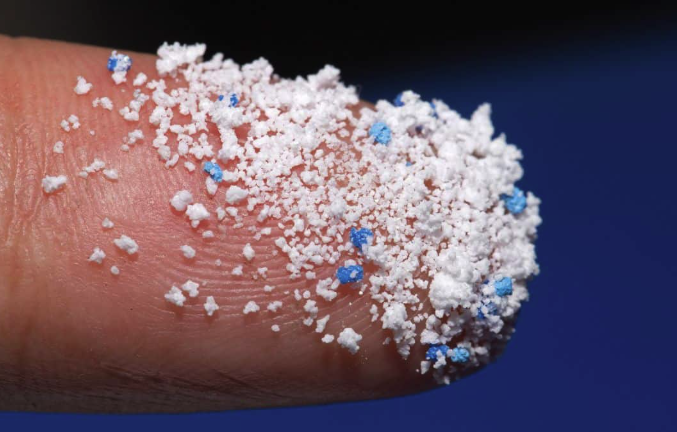
A recent study has revealed alarming levels of toxic flame retardants in black plastic materials used in everyday products like toys and kitchen utensils. These harmful substances are believed to have originated from recycled electronics. But how did components from discarded electronic devices find their way into items we eat with and give to children? Let’s take a closer look.
Results of the Toxic Black Plastic Study
Among the tested products, toy pirate coin beads used in children’s costumes showed the highest concentration of flame retardants, up to 22,800 parts per million. That’s a startling 3% of the toy’s total weight.
These dangerous chemicals are typically used in the casings of electronics like televisions. Researchers suspect these compounds ended up in consumer goods due to errors during the recycling process, leading to unintended contamination.
Even Food-Related Products Were Found to be Contaminated
The study didn’t just find these toxins in toys. Black plastic sushi trays were also found to contain 11,900 parts per million of decaBDE (decabromodiphenyl ether), a chemical from the PBDE family.
A 2024 report linked high levels of PBDEs in the bloodstream to a 300% increase in cancer mortality compared to individuals with low exposure.

Restrictions on DecaBDE
DecaBDE was fully banned by the EPA in 2021 due to its association with a wide range of health issues, including thyroid dysfunction, hormonal imbalances, cancer, neurological problems, developmental defects in fetuses, and immune toxicity.
Despite the ban, the study detected decaBDE levels between 5 to 1,200 times over the legal limit in 70% of the samples tested. It’s estimated that individuals using contaminated utensils could be exposed to around 34.7 parts per million of this substance daily.
What’s most troubling is that these chemicals are not supposed to be in circulation anymore.
Flame-Retardant Electronic Devices
Most households in the U.S. have over 20 electronic devices—smartphones, TVs, laptops, game consoles—all of which use flame retardants to minimize fire hazards. These chemicals are also found in furniture, car seats, carpets, yoga mats, and other common items.
Over time, flame retardants can escape into the air and settle on surfaces, including food and water, which we then ingest.

Limitations of the Study
The study focused solely on black plastic, so it’s unclear whether plastics of other colors pose similar risks. Furthermore, the researchers didn’t disclose the brand names of the tested products.
While other countries have reported similar contamination, U.S.-specific research on food contact materials is still lacking. Other studies have shown that these chemicals can transfer into food or be ingested by children through mouthing their toys.
Bromine Levels
To gauge toxicity, researchers analyzed 203 black plastic items for bromine, a key marker of flame retardant presence. The 20 items with the highest bromine levels were examined in more detail.
Brominated flame retardants are highly toxic, and because they remain in the body for years, they’re a major concern. In 2018 alone, they were estimated to cost the U.S. healthcare system $159 billion. There is no known safe exposure level for these chemicals.

What Can We Do About This Issue?
Consumers can protect themselves by choosing to support brands that are committed to using flame-retardant-free materials. If you own black plastic kitchen utensils, consider swapping them for safer alternatives like stainless steel or glass.
Avoid reusing black plastic containers from takeout meals, and transfer food out of them as soon as possible. Never microwave these containers, as heating can accelerate chemical leaching into your food.
The Bottom Line on Black Plastics
While recycling is meant to benefit the environment and reduce waste, flaws in the system are allowing hazardous materials from electronics to end up in items we use every day—from children’s toys to food containers.
Until stricter controls are in place, it’s wise to steer clear of black plastic kitchenware and opt for safer, more transparent options.
Avoid This Popular Clothing Material That Is Releasing Microplastics Into Your Bl00dstream Every Time It Touches Your Body

Our lives are significantly impacted by our attire. It shields us from the weather in addition to assisting in the development of our individual identities and styles. But the very clothes that are supposed to protect our bodies can actually be hurting us.
Microplastics in Our Body
Tiny plastic particles that are less than 5 mm in size are known as microplastics, and they are becoming a bigger environmental problem. Oceans, soil, air, and even our own bodies contain these particles, which are frequently invisible to the nak3d eye.
Understanding the Impacts of Microplastics on Human Health

Because microplastics are present in many ecosystems and pose a risk to human health, there is growing concern about them.
- Tissue and Cellular Penetration: Microplastics can readily enter human tissues and cells because of their extremely small size, which can result in a number of health concerns.
- Chronic Inflammation: Research shows that exposure to microplastics can lead to chronic inflammation, which is linked to a number of health problems, such as heart disease, cancer, and respiratory disorders.
- Oxidative Stress: Oxidative stress brought on by microplastics might result in an imbalance between the body’s antioxidants and reactive oxygen species.
- Food Chain Contamination: The food chain is impacted by the widespread presence of microplastics in our environment, which poses possible health hazards to people. From apex consumers to primary producers like plants and algae, microplastics can infiltrate the food chain at several stages.
Reducing Exposure and Protecting Human Health

Proactive measures to limit exposure and lessen the possible dangers are essential given the worries about microplastics and human health. Here are some practical suggestions:
- To reduce the amount of microplastics that are shed from synthetic fibers, use bedding and clothes made of natural fibers.
- Choose reusable alternatives to single-use plastics whenever possible.
- Reduce the amount of microplastics that are consumed through drinking water by using water filters that are certified to remove them.
- Choose seafood that has been procured sustainably and take the possibility of microplastic contamination into account.


















